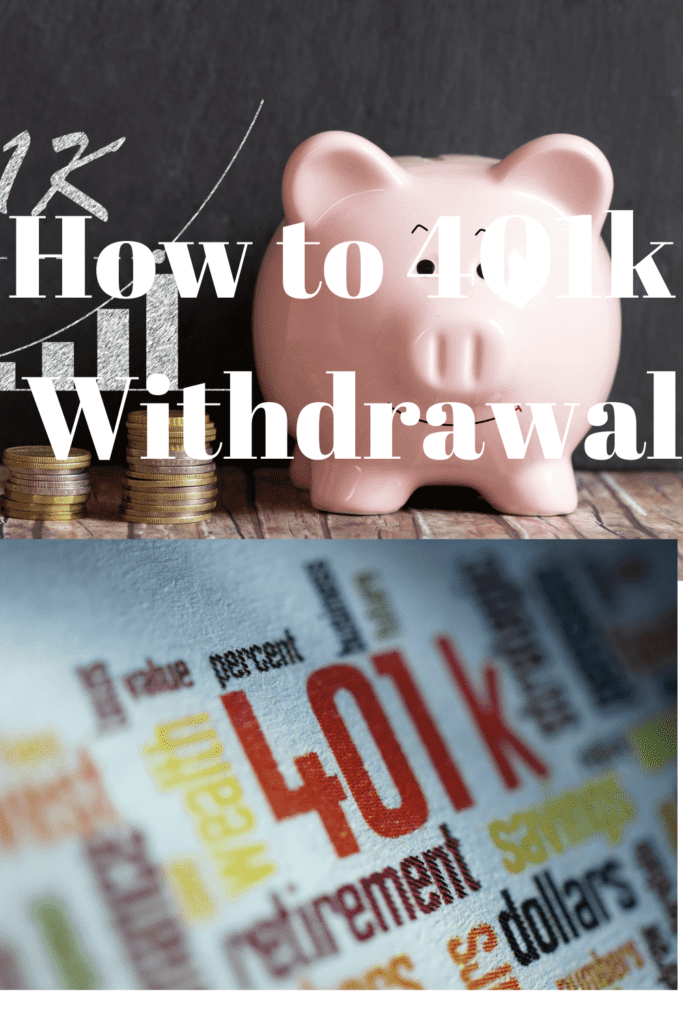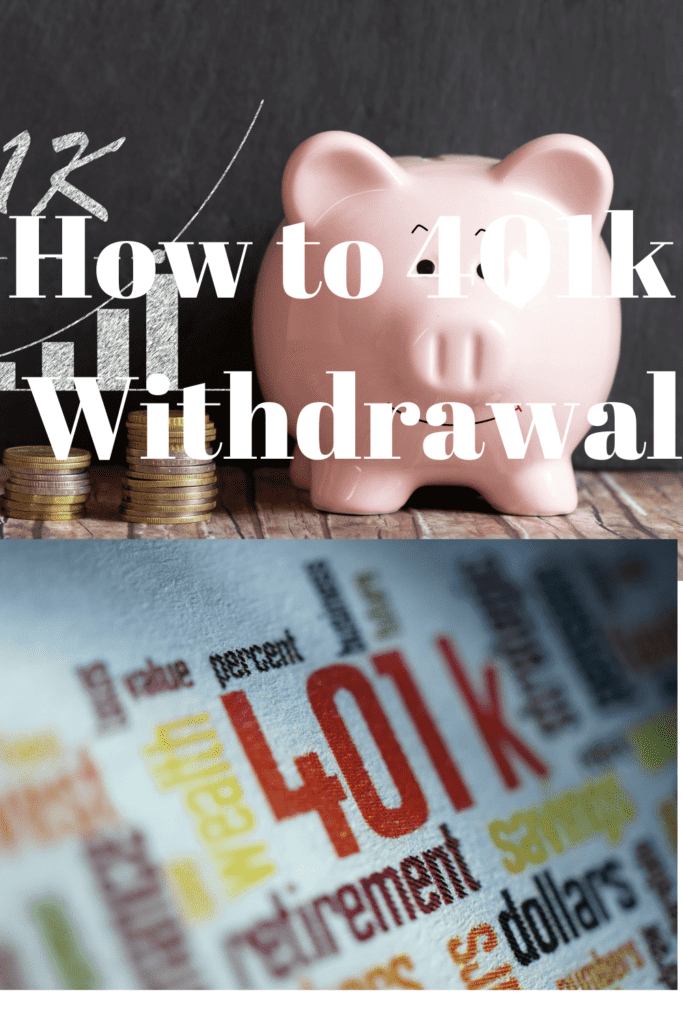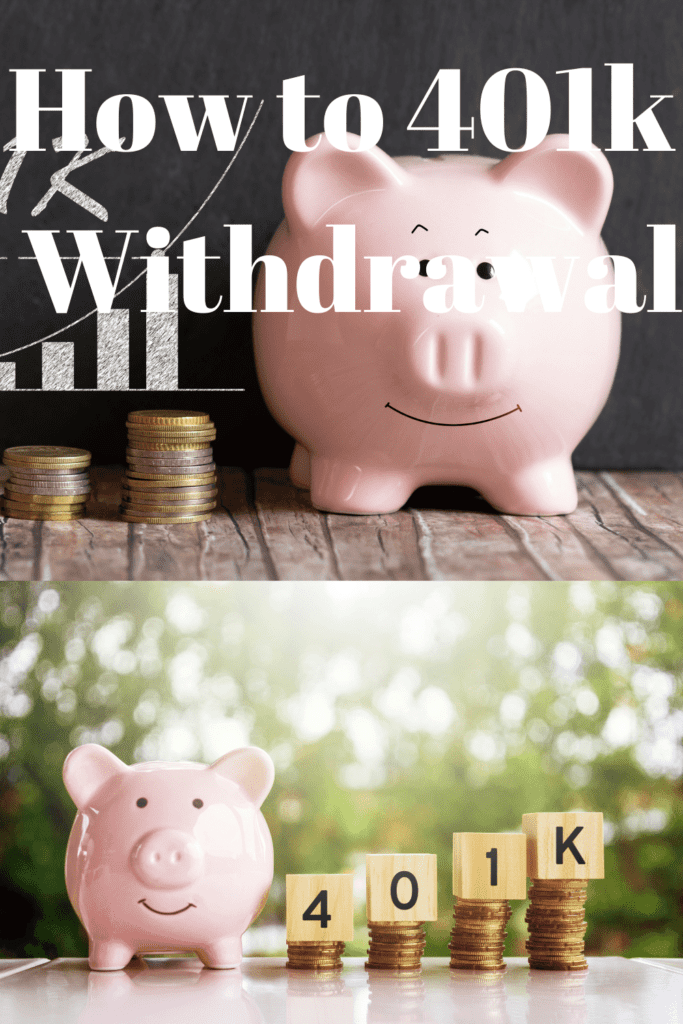How to 401k Withdrawal Overview
401K is now a popular, beneficial retirement plan in the US. A large number of Americans are contributing to their 401k plans with one goal to have enough cash for a comfortable retirement when that time approaches.

However, there are specific ways you can withdraw your money from 401K, and it depends on someone’s age, if you work with your sponsor 401k company, and your 401k rules. Learn today how to 401k withdraw easily.
Key takeaways
- You can the penalty-free from 401k withdraw only if you are more than certain age which is 591/2 and no longer working with your employer.
- Ten percent tax a penalty is applied if someone considers taking his or her withdrawal from 401k before 591/2 age and still not working with the employer.
- Someone can avoid penalties and taxes if only you roll 401k over to IRA. However, it should be a direct transfer, so you won’t have the access to your cash.
- You can check with the plan administrator and see if you take a loan instead of taking 401K withdrawal, especially for people who are not qualified yet.
1. Regular 401k withdraw
Basically, this is applied when you don’t still need to work for your employer which sponsored you one 401K plan. Then you should be over 591/2, and in some cases are over 55 age. This qualifies you to be retired from who employed you. So, with this kind of window, someone needs to only pay the income tax right on the amount he will take out. Fortunately, no penalty was applied because of the age.
2. 401K rollover to the IRA
Generally, someone can also do the rollover of his or her 401K account to IRA. In this case, you will not pay any taxes, then your cash will stay in the IRA for any later use. Further, you can withdraw the money only when you require it. And you will be required to pay the taxes on the amount of your withdrawal every year. There are also some exceptions top penalty based on someone’s status and on how he is planning to utilize the withdrawn funds.
3. Early 401 distribution
If you are not 591/2 age or preferably don’t qualify for 55 age regular withdraw and not working for your sponsor on a 401k plan, this is the method you need to use to withdraw your funds. In this method, note you will have to pay the income taxes and also a ten penalty when withdrawing the money.
Can I Withdraw Money From My 401k While Still Employed?
The early withdrawal rules apply only to assets in your former employer’s 401(k) plan. If you’re still employed with Washington and Sons, you won’t be able to make an early withdrawal from that company’s plan until you’re 59 1/2. However, you can start withdrawing from your former employer’s account at age 55 without paying any penalties. You can even postpone a withdrawal until your Required Minimum Distributions date.
There are a few advantages to withdrawing money from your 401(k) while you’re still employed. You won’t be taxed, and you won’t incur penalties. And you won’t have to cash out your paychecks or open a separate account for the money. But you’ll still want to follow certain rules. You can withdraw money from your 401(k) without causing penalties if you’re disabled.
Obviously, this option can be expensive if you’re not planning on retiring anytime soon. If you’ve only invested in it since 2001, it’s tempting to cash out the funds to get an immediate cash injection. But if you’re lucky enough to have over $2,000 in the account, cashing out now will cost you. On top of all that, you’ll have to pay the federal and state income taxes, plus the early withdrawal penalty. But if you’re like most people, you’ll be happy to know that the 2001 tax bill has helped make this option a little easier to manage.
There are other ways to access your 401(k). However, in general, it’s better to take out a loan and use the money from your 401(k) to pay your debts. However, keep in mind that 401(k loans are not available to everyone. And as with any loan, there are specific rules and regulations regarding them. Make sure to follow these rules or you could face tax penalties.
Can I Just Withdraw Money From My 401k?
If you’re wondering, “Can I just withdraw money from my 401k?” you’re not alone. Thousands of people face this same dilemma every year, and while there are many ways to make withdrawals, the IRS has provided a few options for qualified retirement plan funds.

In most cases, qualified retirement plan funds are free from the claims of creditors, except for the IRS. That means you can withdraw up to $5,000 from your 401(k) tax-free, and you may not be charged a penalty if you’re over age 59 1/2.
How Long Does It Take to Get a 401(k) Withdrawal?
If you’re wondering how long it takes to get a 401(k) withdrawal, you’re not alone. Millions of people face the same question every year, and they’re not sure where to turn for answers. The good news is that there are now several options available. In this article, we’ll look at the pros and cons of these options and how they impact the amount of money you can withdraw from your 401(k) plan.
The process of withdrawing money from a 401(k) plan is quite easy. The process can take anywhere from one to seven business days, depending on the custodian. Once the process is complete, you can expect to receive your money in the mail soon after you request it. However, it’s important to note that you’ll likely face some tax liability when you cash out your funds. That’s why you should consult with a financial adviser and tax expert before taking this step.

You can request a physical check or an automatic ACH deposit into your bank account. If you choose the latter, however, make sure you allow extra time for the 401(k) administrator to prepare and mail the check. A physical check may take two to four weeks to arrive at your doorstep. Alternatively, if you need your money sooner, you can choose direct deposit. This method will expedite the process and ensure you receive your money in the shortest time possible.
Final word
When planning to withdraw your 401 k retirement savings, the first thing is to decide whether to take the periodic distribution, take the lump-sum distribution, roll over your retirement (IRA) savings, or buy an annuity. This is because you need to withdraw your money under huge penalties which you could have avoided earlier. The above is a detailed guide to help you understand all the necessary information you need to know when it comes to withdrawing money from a 401K plan.
